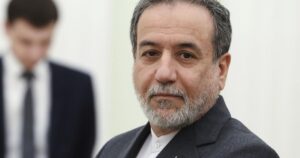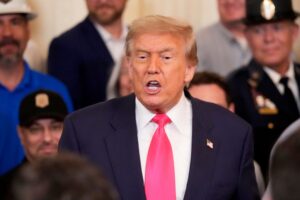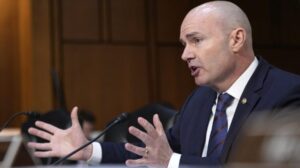The Dictatorship
Military parade barrels through nation’s capital with tanks, troops and 21-gun salute
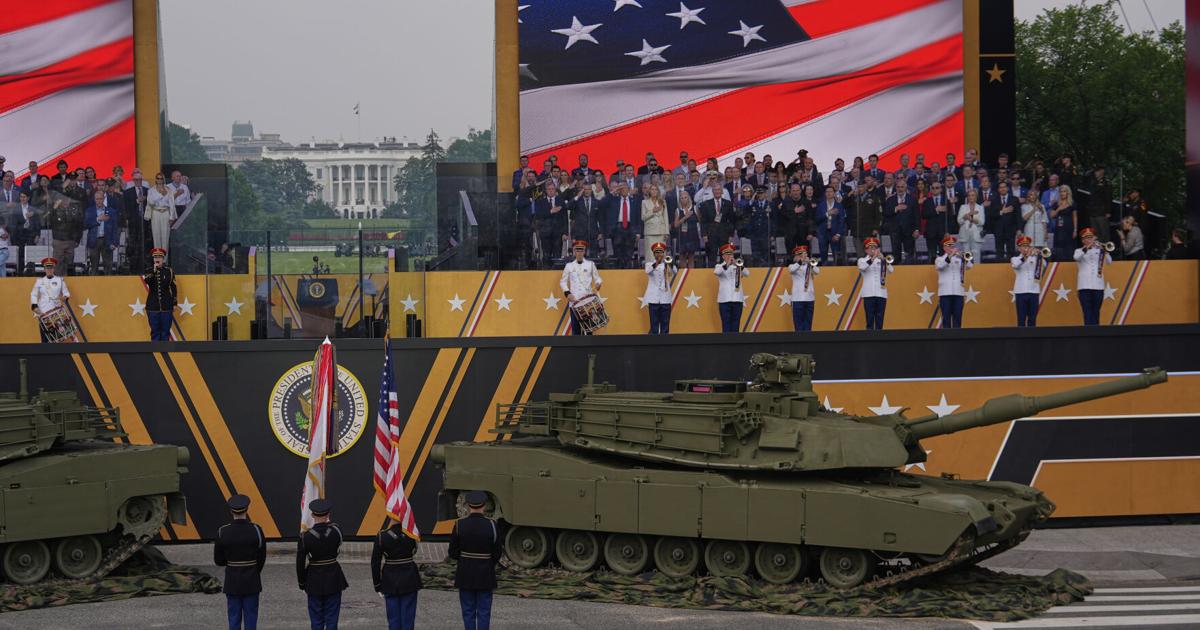
WASHINGTON (AP) — The grand military parade that President Donald Trump had been wanting for years barreled down Constitution Avenue on Saturday with tanks, troops and a 21-gun salute, playing out against a counterpoint of protests around the country by those who decried the U.S. leader as a dictator and would-be king.
The Republican president, on his 79th birthday, sat on a special viewing stand south of the White House to watch the display of American military might, which began early and moved swiftly as light rain fell and clouds shrouded the Washington Monument. The procession, with more than 6,000 soldiers and 128 Army tanks, was one Trump tried to make happen in his first term after seeing such an event in Paris in 2017, but the plans never came together until the parade was added to an event recognizing the Army’s 250th anniversary.
“Every other country celebrates their victories. It’s about time America did too,” Trump declared in brief remarks at the parade’s end.
The president praised the strength of the military’s fighting forces and said U.S. soldiers “fight, fight fight and they win, win win” — putting a new twist on a line that Trump regularly delivered during his 2024 campaign rallies after he survived an assassination attempt.
Early in the evening’s pageantry, the Army’s Golden Knights parachute team descended from overcast skies toward the reviewing stand. The team had been scheduled to appear at the end of the parade, but jumped earlier than planned in the drizzly skies above the National Mall.
At times, Trump stood and saluted as troops marched past the reviewing stand. But attendance appeared to fall far short of early predictions that as many as 200,000 people would attend the festival and parade. There were large gaps between viewers near the Washington Monument on a day when steamy weather and the threat of thunderstorms could have dampened turnout.
Hours before the parade started, demonstrators turned out in streets and parks around the nation to sound off against the Republican president. They criticized Trump for using the military to respond to people protesting his deportation efforts and for the muscular military show in the U.S. capital.
Displays of military might
The daylong display of America’s Army came as Trump has shown his willingness to use the nation’s military might in ways other U.S. presidents have typically avoided. In the last week, he has activated the California National Guard over the governor’s objections and dispatched the U.S. Marines to provide security during Los Angeles protests related to immigration raids, prompting a state lawsuit to stop the deployments.
As armored vehicles rolled down the street in front of the president, on the other side of the country, the Marines who Trump deployed to Los Angeles appeared at a demonstration for the first time, standing guard outside a federal building. Dozens of Marines stood shoulder to shoulder in full combat gear beside the National Guard, Homeland Security officers and other law enforcement. Hundreds of protesters facing them jeered in English and Spanish, telling the troops to go home.
A previously calm demonstration in downtown Los Angeles turned chaotic when police on horseback charged at the crowd, striking some with rods and batons as they cleared the street in front of the federal building and fired tear gas and crowd control projectiles.
In Washington, hundreds protesting Trump carried signs with messages that included “Where’s the due process?” and “No to Trump’s fascist military parade” as they marched toward the White House.
A larger-than-life puppet of Trump was wheeled through the crowd, a caricature of the president wearing a crown and sitting on a golden toilet.
Other protesters waved pride flags and hoisted signs, some with pointed messages such as “I prefer crushed ICE,” referring to the Immigration and Customs Enforcement agency. Other messages included “The invasion was HERE Jan. 6th, NOT in L.A.” and “Flip me off if you’re a FASCIST.”
“No Kings” rallies unfolded in hundreds of citiesdesigned to counter what organizers said were Trump’s plans to feed his ego on his 79th birthday and Flag Day. Organizers said they picked the name to support democracy and speak out against what they call the authoritarian actions of the Trump administration.
Veterans, supporters and protesters
Meanwhile, on the National Mall, a display of armored vehicles, helicopters and military-grade equipment was set up to commemorate the Army’s birthday. Vendors outside the Army festival sold gear marking the military milestone. Others hawked Trump-themed merchandise.
Larry Stallard, a retired American Airlines pilot, said he traveled to Washington from Kansas City for the weekend “to see the military and see Trump.”
Stallard, who voted for Trump, said it was “hard to believe” people were upset about the cost of the event when “they blow that in 10 seconds on things that we don’t even need.”
Doug Haynes, a Navy veteran who voted for Trump, attended the daylong festival to celebrate the Army’s 250th birthday, but said the parade “was a little over the top.”
Pointing at a nearby tank, Haynes said that having them roll down the street is a “very bold statement to the world, perhaps.”
The parade was added just two months ago to the long-planned celebration of the Army’s birthday and has drawn criticism for its price tag of up to $45 million and the possibility that the lumbering tanks could tear up city streets. The Army has taken a variety of steps to protect the streets, including laying metal plates along the route.
About 6 in 10 Americans said Saturday’s parade was “not a good use” of government money. The vast majority of people, 78%, said they neither approve nor disapprove of the parade overall, according to a poll from The Associated Press-NORC Center for Public Affairs Research.
Kathy Straus traveled from Richmond, Virginia, to attend the parade, carrying a sign criticizing its cost and arguing the money could have been used to feed veterans.
“I thought that it would be more effective to come here than go to a protest with people that think similar to me,” said Straus.
The parade wound down Constitution Avenue, lined with security fencing and barriers. A flyover of military aircraft included World War II-era planes, including a B-25 Mitchell bomber, and Army helicopters flew low over the crowd, below the top of the Washington Monument. Mounted soldiers from the 1st Cavalry Division made an appearance — horses once played a crucial role in warfare, but today they’re mostly used in ceremonial events like today’s parade.
Trump swore in 250 new recruits and returning soldiers into service, with soldiers repeating an oath after him.
“Welcome to the United States Army! And have a great life,” Trump said to them afterward.
Country music singer Warren Zeiders performed, as did “God Bless the U.S.A.” singer Lee Greenwood. The event was capped off by a fireworks show.
It appeared that plans to have U.S. Air Force fighter jets fly over were scrapped because of the weather.
____
Associated Press writers Eric Tucker, Michelle L. Price, Nathan Ellgren, Lea Skene, Olivia Diaz, Joey Cappelletti, Ashraf Khalil and Tara Copp in Washington and Jake Offenhartz in Los Angeles contributed to this report.
The Dictatorship
Trump says Iran must open itself to inspection to verify it doesn’t restart its nuclear program
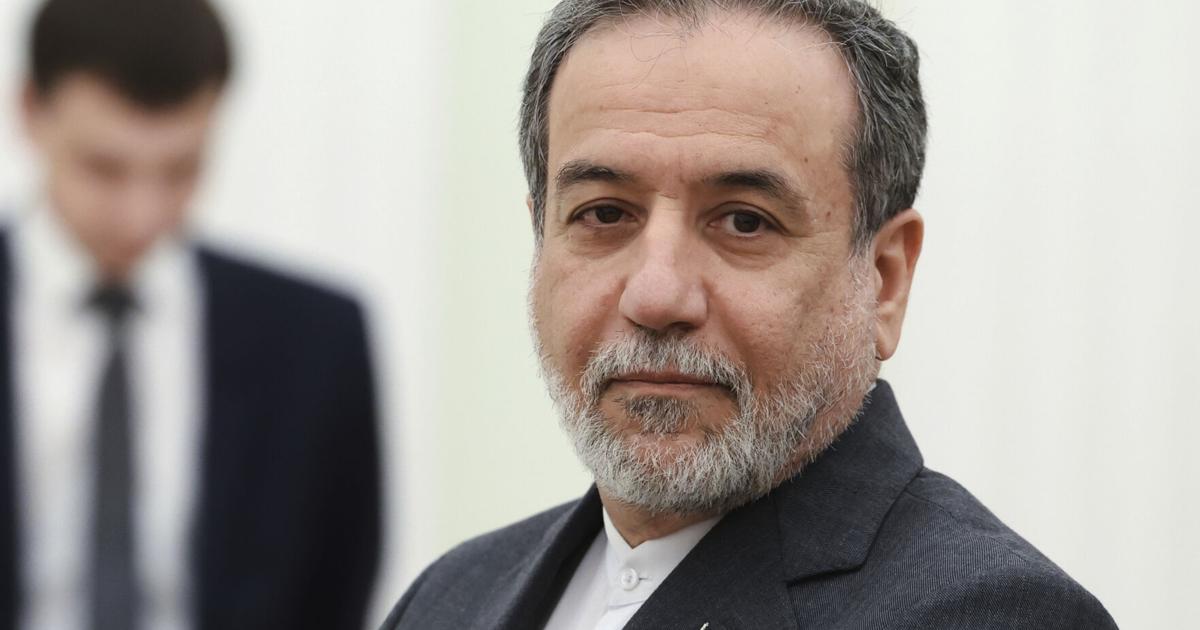
DUBAI, United Arab Emirates (AP) — U.S. President Donald Trump said on Friday that he expects Iran to open itself to international inspection to verify that it doesn’t restart its nuclear program.
Asked during a White House news conference if he would demand during expected talks with Iran that the International Atomic Energy Agency, the U.N. nuclear watchdog, or some other organization be authorized to conduct inspections, Trump responded that the Islamic Republic would have to cooperate with the group “or somebody that we respect, including ourselves.”
Earlier, Iran’s top diplomat said that the possibility of new negotiations with the United States on his country’s nuclear program has been “complicated” by the American attack on three of the sites, which he conceded caused “serious damage.”
The U.S. was one of the parties to the 2015 nuclear deal in which Iran agreed to limits on its uranium enrichment program in exchange for sanctions relief and other benefits.
Nuclear talks
That deal unraveled after Trump unilaterally pulled out the U.S. during his first term. Trump has suggested he’s interested in new talks with Iran and said the two sides would meet next week.
In an interview on Iranian state television broadcast late Thursday, Foreign Minister Abbas Araghchi left open the possibility that his country would again enter talks on its nuclear program, but suggested it wouldn’t be anytime soon.
“No agreement has been made for resuming the negotiations,” he said. “No time has been set, no promise has been made, and we haven’t even talked about restarting the talks.”
The American decision to intervene militarily “made it more complicated and more difficult” for talks on Iran’s nuclear program, Araghchi said.
Defense Secretary Pete Hegseth, left, speaks at a news conference with Joint Chiefs Chairman Gen. Dan Caine at the Pentagon, Thursday, June 26, 2025 in Washington. (AP Photo/Kevin Wolf)
Defense Secretary Pete Hegseth, left, speaks at a news conference with Joint Chiefs Chairman Gen. Dan Caine at the Pentagon, Thursday, June 26, 2025 in Washington. (AP Photo/Kevin Wolf)
Friday prayers
Many imams, during Friday prayers, stressed Supreme Leader Ayatollah Ali Khamenei’s message from Thursday that the war had been a victory for Iran.
Cleric Hamzeh Khalili, who is also the deputy chief justice of Iran, vowed during a prayer service in Tehran that the courts would prosecute people accused of spying for Israel “in a special way.”
During the war with Israel, Iran hanged several people whom it already had in custody on espionage charges, sparking fears from activists that it could conduct a wave of executions after the conflict ended. Authorities reportedly have detained dozens in various cities on the charge of cooperating with Israel.
Israel relentlessly attacked Iran beginning on June 13, targeting its nuclear sites, defense systems, high-ranking military officials and atomic scientists.
In 12 days of strikes, Israel said that it killed around 30 Iranian commanders and 11 nuclear scientists, while hitting eight nuclear-related facilities and more than 720 military infrastructure sites. More than 1,000 people were killed, including at least 417 civilians, according to the Washington-based Human Rights Activists group.
Iran fired more than 550 ballistic missiles at Israel, most of which were intercepted, but those that got through caused damage in many areas and killed 28 people.
Israeli military spokesperson Brig. Gen Effie Defrin said Friday that in some areas, it had exceeded its operational goals, but needed to remain vigilant.
“We are under no illusion, the enemy has not changed its intentions,” he said.
The U.S. stepped in on Sunday to hit three of Iran’s nuclear sites with bunker busters dropped by B-2 bombers — explosives designed to penetrate deep into the ground to damage the heavily fortified targets. Iran, in retaliation, fired missiles at a U.S. base in Qatar on Monday, but caused no known casualties.
Trump and Khamenei claims
Trump said that the American attacks “completely and fully obliterated” Iran’s nuclear program. However, Khamenei on Thursday accused the U.S. president of exaggerating the damage, saying the strikes didn’t “achieve anything significant.”
Joint Chiefs Chairman Gen. Dan Caine steps away from the podium following a news conference at the Pentagon, Thursday, June 26, 2025 in Washington. (AP Photo/Kevin Wolf)
Joint Chiefs Chairman Gen. Dan Caine steps away from the podium following a news conference at the Pentagon, Thursday, June 26, 2025 in Washington. (AP Photo/Kevin Wolf)
In response, Trump told reporters Friday that the sites were “bombed to hell.” He even directed a message to the supreme leader: “Look you’re a man of great faith. A man who’s highly respected in his country. You have to tell the truth. You got beat to hell.”
A senior Israeli military official said Friday that their intelligence shows that Israel’s strikes on various targets neutralized Iran’s ability to enrich uranium to 90% for “a prolonged period.” It was unclear whether that contradicted a preliminary U.S. report that suggested the program had been set back months.
There has been speculation that Iran moved much of its highly-enriched uranium before the strikes, something that it told the IAEA that it planned to do.
Even if that turns out to be true, IAEA Director-General Rafael Mariano Grossi told Radio France International that the damage done to the Fordo site, which was built into a mountain, “is very, very, very considerable.”
Among other things, he said, centrifuges are “quite precise machines,” and it’s “not possible” that the concussion from multiple 30,000-pound bombs wouldn’t have caused “important physical damage.”
“These centrifuges are no longer operational,” he said.
Araghchi himself acknowledged “the level of damage is high, and it’s serious damage.”
He added that Iran hadn’t yet decided whether to allow in IAEA inspectors to assess the damage, but they would be kept out “for the time being.”
___
Aamer Madhani in Washington. and Julia Frankel and Sam Mednick in Jerusalem, contributed to this story.
The Dictatorship
The Supreme Court just fumbled a basic question about birthright citizenship
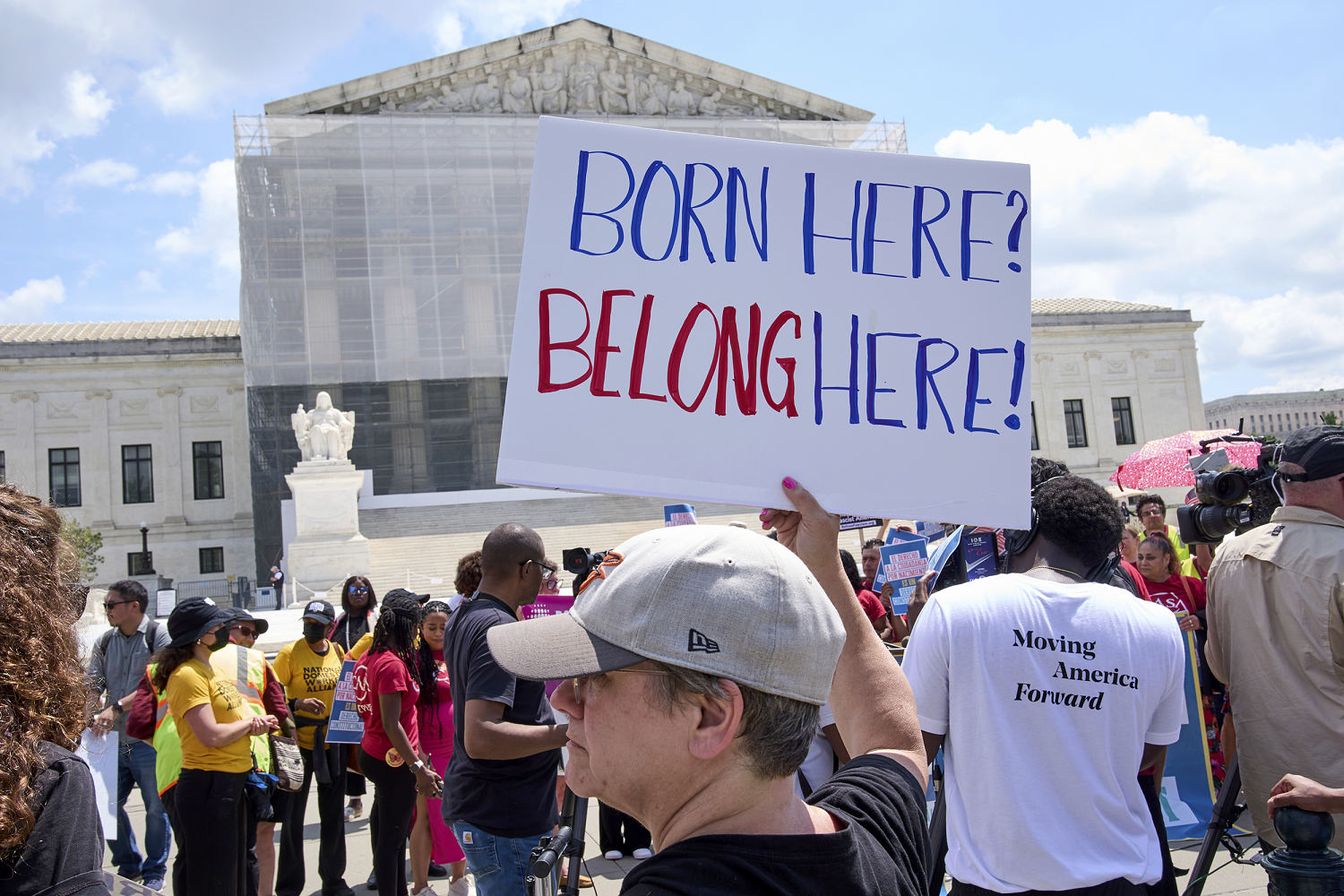
If you arose Friday morning thinking the U.S. Supreme Court would finally settle the question of birthright citizenship, you were disappointed. We know no more now than we did Thursday about how Chief Justice John Roberts’ court regards children born here: The liberal three-justice minority is certain all are citizens, while the conservative six-person majority remained mum. That conservative majority avoided addressing the constitutionality of President Donald Trump’s executive order restricting birthright citizenship and chose instead to reject so-called “universal injunctions” blocking his executive order.
All we learned Friday is that a final resolution to the question of birthright citizenship is somewhere in the distance.
All we learned Friday is that a final resolution to the question of birthright citizenship is somewhere in the distance, beyond many more rounds of court proceedings.
For families directly targeted by Trump’s Jan. 20 executive orderwhich aims to bar children born to nonpermanent residents from automatic citizenship, too little has changed. Such families — and especially their yet-to-be born children — remain in the crosshairs of a dispute that will continue unresolved at least for months to come. Going forward, such families will be subjected to harrowing circumstances, not knowing where they stand before the court and the Constitution.
By some accounts, we are five months into this era of uncertainty regarding citizenship. But we have endured years, decades, even centuries of confusion about citizenship.
We know that Trump intended to do away with birthright citizenship seven years ago, even though details were lacking. Consult the Congressional Record, and you’ll discover that the language in Trump’s executive order is similar to the language of bills that have been put forward every session since at least 2003. Scour law review articles and you’ll learn that as far back as the 1980s, some legal scholars have promoted the view that children of noncitizens born in the U.S. cannot be birthright citizens.
This longer view of the dispute over birthright citizenship helps explain why we, in this moment, feel so worn down by the evasion that is Friday’s Supreme Court decision. How long should Americans, especially children born in this country and their families, be expected to endure such indecision, confusion and uncertainty?
Perhaps we should not be surprised to find Roberts’ 21st century court fumbling the birthright citizenship question. Indeed, the origins of birthright citizenship in the United States are in the ignoble ineptitude of lawmakers two centuries ago. In early America, free Black Americans, nonimmigrants, were a despised group, and they were regularly confronted by those who argued that they were not citizens and thus had no rights before the courts or the Constitution.
It was a harrowing existence. In the nation’s early years, the American Colonization Society organized to press free Black Americans to leave the country, to places such as the West African colony of Liberia. The ACS outfitted ships, funded travel and encouraged Black Americans to self-deport, all to preserve the U.S. as a white man’s country. State lawmakers and local officials played their part, enacting so-called Black laws that constrained everyday life — where they worked and worshipped, how they traveled and raised their children — all to further encourage free Black Americans to leave.
Were free Black Americans citizens? They believed so and looked to the terms of the Declaration of Independence and the Constitution for authority. All men were created equal, they insisted. The Constitution recognized birthright citizenship and drew no color line, they urged. Today, we can read their ideas in early American newspapers, pamphlets and books. They are to be credited with promoting the terms of their own belonging, and those of all persons born in the United States. Their rallying cry: Citizenship in the U.S. was the result of birth, no more and no less.
Early American lawmakers failed Black Americans, leaving them to make families, lives and communities in the face of profound uncertainty.
Early American lawmakers failed Black Americans, leaving them to make families, lives and communities in the face of profound uncertainty. For example, in 1821, when Congress considered admitting Missouri into the Union, lawmakers asked whether Black Americans would have the right to enter the new state. Only if they were citizens, it was said, and a debate ensued with representatives taking both sides. The result was a twisted injustice: Congress never firmly answer the question and instead admitted Missouri while leaving Black Americans mired in ambiguity.
Also in 1821, U.S. Attorney General William Wirt was asked to resolve whether a free Black man could command a ship in Virginia’s coastal waters. The law provided that he could only if he were a citizen. Thus, Wirt was charged with solving the riddle of Black citizenship. But he did not. Instead, he reached a twisted conclusion: In Virginia, a free Black man could not be a citizen, but in another state he perhaps could. Once again, Black Americans were left to make lives under murky circumstances.
Notoriously, in the 1857 Dred Scott casethe U.S. Supreme Court concluded that no Black American could be a citizen. Or at least this is how the story is often told. A closer look reveals that the nation’s high court was deeply divided in that instance. Justice Roger Taney was sure that Black Americans were not birthright citizens. Still, his fellow jurists, Associate Justices Benjamin Curtis and John McLean, took the opposite view. Birthright, they concluded, was the law of the land and, absent a color bar in the Constitution, Black Americans, like their white counterparts, were citizens. The high court failed to settle much at all. Black Americans might be citizens to some, but to others they were subject to Black laws and colonization.
It would take a Civil War and a remaking of the Constitution during Reconstruction to settle debates over Black citizenship. The 14th Amendment constitutionalized the birthright principle that Black Americans had long championed. Along the way, Black Americans learned hard lessons, and so should we. The nation’s founding documents can be subjected to interpretation and reinterpretation in the hands of lawmakers, courts and the executive branch. Those designated as despised can be variously regarded as citizens and noncitizens, while lawmakers fumble and fail to settle the debate.
Those designated as despised can be variously regarded as citizens and noncitizens, while lawmakers fumble and fail to settle the debate
Most of all, by recalling the struggles of Black Americans for birthright citizenship, we better understand that uncertainty before the law is its own form of inhumanity. Being the object of debate is its own sort of harrowing existence. In early America, Black Americans made homes, raised children, established businesses and built a political culture — all the while facing down efforts to banish, exile or otherwise remove them from the nation. We rightly admire their courage and persistence. At the same time, we can recognize the price they paid for being subject to the deliberations of lawmakers who avoided, sidestepped, punted and otherwise refused to settle their status as birthright citizens.
Friday, the nation’s high court fumbled. Rather than affirm the birthright principleit put that question off for another day. In the months ahead, there will be briefs filed and arguments presented. At the same time, there will also be harrowing days ahead for immigrant Americans and their children, people who urgently await a determination of their standing as birthright citizens before the Constitution.
As a nation, we owe them at least that.
Martha S. Jones
Martha S. Jones is the Society of Black Alumni President Professor and Professor of History at The Johns Hopkins University. She is author of the prize-winning “Birthright Citizens: A History of Race and Race in Antebellum American” (2018, Cambridge University Press.) She is also the author of an amici cruise brief on the subject of birthright citizenship along with historian Kate Masur.
The Dictatorship
What this congressman’s shockingly racist post says about bigotry in Trump 2.0

If there is a defining characteristic of President Donald Trump’s second term — aside from shameless self-enrichment out of the executive branch — I’d argue it’s the proliferation of unabashed and outspoken racism espoused by the president and many of his most loyal followers.
The online attacks launched by Rep. Andy Ogles, R-Tenn., against New York City mayoral candidate Zohran Mamdani demonstrated this in stark relief, such as here:
As did many of the other GOP responses to Mamdani’s Democratic primary victory this week, which my BLN colleague Steve Benen highlighted for MaddowBlog. This reactionary post from Charlie Kirk, which reads like Ku Klux Klan propaganda, is a prime example:
During a recent conversation with MSNBC’s Chris Hayesauthor Ta-Nehisi Coates said that one of the Civil Rights Movement’s greatest successes has fallen apart in the Trump era: People no longer feel ashamed to express “open bigotry.” Coates added that one of Trump’s most successful political instincts has been his bet that conservative voters are broadly more comfortable with the racist rhetoric that previous Republicans have flirted with a bit more obliquely.
Indeed, this administration has spent its opening months seemingly grooming the MAGA movement to be OK with blatant racism — or, at minimum, accept it as a natural part of political discourse. Even when compared with Trump’s first administration, which promoted diversity programs and parted ways with a speechwriter after it was revealed he spoke at a conference attended by white nationalists, Trump 2.0 has been far more permissive of unabashed bigotry.
Indeed, this administration has spent its opening months seemingly grooming the MAGA movement to be OK with blatant racism.
Trump welcomed the aforementioned speechwriter, Darren Beattie, into his second administration despite the fact that he wrote last year that “competent white men must be in charge if you want things to work.” Trump’s administration rehired after initially firing a Department of Government Efficiency staffer who had called for the normalization of Indian hate. And a host of other figures in the administration have a history of promoting various other blatantly bigoted ideas.
Trump himself has peddled false claimsspread broadly by white nationalists, that white people are facing systemic oppression in South Africa, and he has targeted an exhibit at the Smithsonian American Art Museum that discredits racist pseudoscience. Trump’s Department of Homeland Security itself has spread propaganda promoted by overtly racist social media accountsand his White House has frequently relied on cruel memes meant to dehumanize and mock nonwhite immigrants.
To be clear, MAGA racism is not a new phenomenon. But the president certainly seems to have given his followers a green light to embrace and express any racist hate they may be feeling. And all of this has the feel of a far-right psyop — as if the administration is attempting to train Americans’ gag reflexes in such a way that grotesque exhibitions of bigotry that may have made them squeamish in the past no longer do so.
-

 The Josh Fourrier Show8 months ago
The Josh Fourrier Show8 months agoDOOMSDAY: Trump won, now what?
-
Uncategorized8 months ago
Bob Good to step down as Freedom Caucus chair this week
-
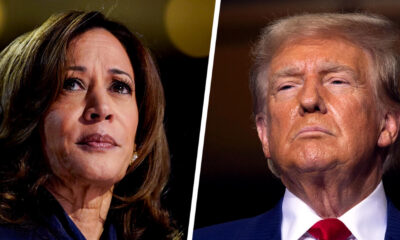
 Politics8 months ago
Politics8 months agoWhat 7 political experts will be watching at Tuesday’s debate
-

 Politics8 months ago
Politics8 months agoHow Republicans could foil Harris’ Supreme Court plans if she’s elected
-
Economy8 months ago
Fed moves to protect weakening job market with bold rate cut
-
Economy8 months ago
It’s still the economy: What TV ads tell us about each campaign’s closing message
-
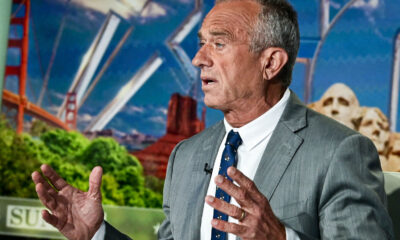
 Politics8 months ago
Politics8 months agoRFK Jr.’s bid to take himself off swing state ballots may scramble mail-in voting
-
Uncategorized8 months ago
Johnson plans to bring House GOP short-term spending measure to House floor Wednesday



